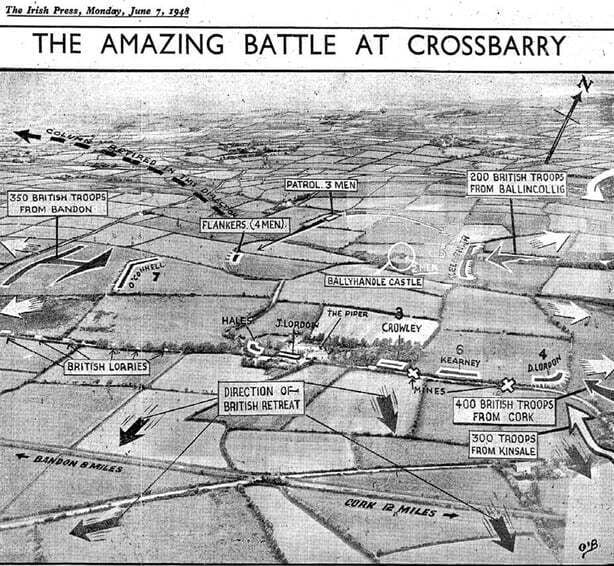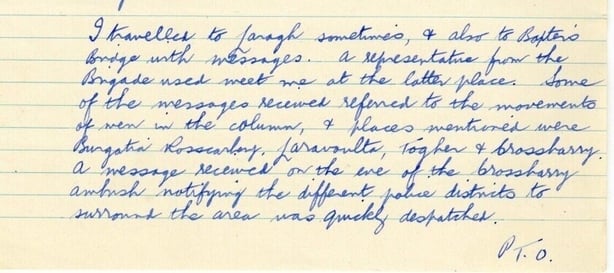Analysis: Mary Bridget Twomey's story exemplifies the struggle of revolutionary Irish women and their ongoing fight for historical justice
International Women's Day is a celebration of women’s achievements and a call to action for gender equality. Its origins date back to the early 20th century, a period of rapid industrialisation, social change, and the emergence of feminist movements.
This era was also marked by intense political upheaval and revolutionary violence in Ireland. The Decade of Centenaries and the online release of thousands of military service pension records by the Military Archives have facilitated deeper discussions about women's roles during the Irish Revolution.
These records highlight their crucial but often overlooked role, engaging in intelligence work, smuggling arms, sheltering fighters, and acting as couriers. Their contributions were vital to the success of the revolutionary movement, yet they did not translate into equal recognition in the post-independence period.
We need your consent to load this rte-player contentWe use rte-player to manage extra content that can set cookies on your device and collect data about your activity. Please review their details and accept them to load the content.Manage Preferences
From Six One News in 2017, the Military Archives releases pension details online
Despite their sacrifices, the military pension system established in 1934 imposed rigid definitions of "active service", favouring traditional combat roles and marginalising Cumann na mBan members. The State’s position on women’s service was articulated by the Minister for Defence, Frank Aiken, who emphasised that "the same test of service will be applied to women as was applied to men and that that will result … in very few being granted an active service certificate".
Women who had risked their lives transporting weapons, gathering intelligence, and providing medical aid were deemed auxiliaries rather than active participants. As a result, they were systematically denied equal financial compensation and official recognition. Many women struggled for decades to secure state acknowledgement through military pensions. Mary Bridget Twomey’s story exemplifies this struggle, highlighting the resilience of revolutionary women and the ongoing fight for historical justice.
Who was Mary Bridget Twomey?
On a quiet day in 1919, Mary Bridget Twomey sat at her desk in Bandon’s post office, sorting through telegrams. To the untrained eye, she was just another clerk. But beneath the routine of her daily job, Twomey was operating as a vital cog in the IRA’s intelligence network, intercepting and decoding British military messages. Her work saved lives, shaped ambushes and outmanoeuvred the empire.
We need your consent to load this rte-player contentWe use rte-player to manage extra content that can set cookies on your device and collect data about your activity. Please review their details and accept them to load the content.Manage Preferences
From RTÉ History Show, Myles Dungan is joined by Marie Coleman, Mary McAuliffe, Tomás Mac Conmara, Ailbhe Rogers and Lindie Naughton to discuss the experience of women during the Irish War of Independence.
Twomey’s role in the Irish War of Independence was nothing short of extraordinary. Recruited by Brigade Intelligence Officer Seán Buckley, she had access to the secret communications of British forces. She deciphered troop movements, raids, and counterinsurgency strategies, passing this critical intelligence to the 3rd Cork Brigade.
Her work was particularly significant in the lead-up to the legendary Crossbarry ambush of March 1921, when British forces attempted to encircle Tom Barry’s Active Service Unit. Thanks to Twomey’s intercepted messages, the IRA anticipated the attack and launched a daring counteroffensive. Without her, Barry’s column would have been wiped out.
Brigade Adjutant Liam Deasy later credited her as the only person inside Bandon’s post office with the skill and nerve to extract such intelligence. "She was the only one in Bandon P.O. that was able to get stuff there… she gave the information that led up to the big raid on Crossbarry," he attested.

Beyond her intelligence work, Twomey trained others in wiretapping techniques, passed on cipher keys, and strengthened the entire guerrilla war effort. This contribution was not just logistical but central to the success of the warfare.
But despite all of this, the State turned its back on her when it came time for recognition. When Twomey applied for a pension, she was only awarded a Grade E classification, the lowest possible grade. Twomey contested this decision in her February 1946 appeal, arguing that she was entitled to a Grade D pension "for special services rendered". She outlined the depth of her contribution, noting:
- "I was the only P.O. worker in Cork III Brigade area… who could be got to intercept police messages coming in and out of P.O., and decoded same, as I was supplied with police cypher key monthly and held the latter in my possession the whole time.
- I was the key to the success of Cork III Brigade Intelligence system. The whole intelligence system of Cork III Brigade revolved around my work, and I was the hub around which the system hummed."

But even with endorsements from top IRA figures, her appeal was rejected. The official ruling maintained that her role did not meet the threshold of active service as required by the 1934 Military Service Pensions Act. This decision reflected a wider institutional failure to acknowledge women’s intelligence work, which, while non-combatant, was fundamental to guerrilla warfare.
On International Women’s Day, Twomey’s story is a reminder that recognition isn’t always given, but it has to be fought for. Women were central to Ireland’s struggle for independence, yet many, like Twomey, spent decades proving their contributions mattered. Her battle for a pension wasn’t just about financial support; it was about ensuring that intelligence work was valued as much as combat.
International Women’s Day is about more than celebration – it’s about questioning whose efforts have been overlooked and pushing for recognition where it’s due. Twomey’s fight may have been decades ago, but the conversation about acknowledging women’s work – past and present – continues today.
Follow RTÉ Brainstorm on WhatsApp and Instagram for more stories and updates
The views expressed here are those of the author and do not represent or reflect the views of RTÉ





